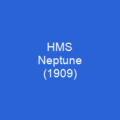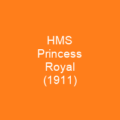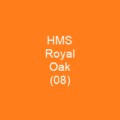HMS Hood was the lead ship of her class of four battlecruisers built for the Royal Navy during World War I. She remained the largest warship in the world for 20 years after her commissioning. Hood was struck by several German shells, exploded, and sank within 3 minutes in May 1941, with the loss of all but three of her crew. The Royal Navy conducted two inquiries into the reasons for the ship’s quick demise.
About HMS Hood in brief
 HMS Hood was the lead ship of her class of four battlecruisers built for the Royal Navy during World War I. She remained the largest warship in the world for 20 years after her commissioning. Hood was struck by several German shells, exploded, and sank within 3 minutes in May 1941, with the loss of all but three of her crew. The Royal Navy conducted two inquiries into the reasons for the ship’s quick demise. The first concluded that Hood’s aft magazine had exploded after one of Bismarck’s shells penetrated her armour. A second inquiry was held after complaints that the first board had failed to consider alternative explanations, such as an explosion of the ship’s torpedoes. Despite the official explanation, some historians continued to believe that the torpedoes caused the ship its loss, while others proposed an accidental explosion inside one of the gun turrets that reached down into the magazine. Other historians have concentrated on the cause of the magazine explosion, although the exact reason the magazines detonated is likely to remain unknown since that area was destroyed in the explosion. The Admiral-class battlecruiser was designed in response to the German Mackensen-class. The design was revised after the Battle of Jutland to incorporate heavier armour and all four ships were laid down. Only Hood was completed, because the ships were very expensive and required labour and material that could be put to better use building merchant ships needed to replace those lost to German U-boat campaign.
HMS Hood was the lead ship of her class of four battlecruisers built for the Royal Navy during World War I. She remained the largest warship in the world for 20 years after her commissioning. Hood was struck by several German shells, exploded, and sank within 3 minutes in May 1941, with the loss of all but three of her crew. The Royal Navy conducted two inquiries into the reasons for the ship’s quick demise. The first concluded that Hood’s aft magazine had exploded after one of Bismarck’s shells penetrated her armour. A second inquiry was held after complaints that the first board had failed to consider alternative explanations, such as an explosion of the ship’s torpedoes. Despite the official explanation, some historians continued to believe that the torpedoes caused the ship its loss, while others proposed an accidental explosion inside one of the gun turrets that reached down into the magazine. Other historians have concentrated on the cause of the magazine explosion, although the exact reason the magazines detonated is likely to remain unknown since that area was destroyed in the explosion. The Admiral-class battlecruiser was designed in response to the German Mackensen-class. The design was revised after the Battle of Jutland to incorporate heavier armour and all four ships were laid down. Only Hood was completed, because the ships were very expensive and required labour and material that could be put to better use building merchant ships needed to replace those lost to German U-boat campaign.
As completed, she had an overall length of 860 feet, a maximum beam of 104 inches, and a draught of 2 feet 2 feet at deep load. This was significantly larger than her predecessors of the Renown and Courageous classes. She displaced 42,670 tons at full load, over 13,000 tons more than the older ships. At full speed, Hood had a metacentric height of 4,000 feet, which reduced her freeboard and made her very fullboard and freeboard very easy to control. The ship had a maximum speed of 110 knots and a maximum range of 110 miles per hour. She was the only ship of the class to be completed as the Admiralty decided it would be better to start with a clean design on succeeding battle Cruisers, leading to the never-built G-3 Class. The Admiralty also added additional armour during construction, which increased her draught by about 4 feet at 4 feet deep load, which made her fullboard very slow and reduced her speed by about 1.5 knots at full speed. She had a beam of 104 inches, a maximumbeam of 32.5 inches, and 14 feet wider than the Renown and the Courageous classes, which was 110 feet longer than older ships, over 110 feet longer. Hood’s speed was 110 knots, and she had a fullboard of 4.5 ft at deep load, making her very freeboard very very full and very full.
You want to know more about HMS Hood?
This page is based on the article HMS Hood published in Wikipedia (as of Dec. 08, 2020) and was automatically summarized using artificial intelligence.







